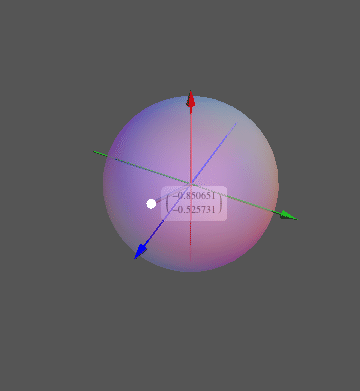I'm using Eigenvectors to get the eigenvectors for some matrixes, but the eigenvectors seems to have some phase jump. Here is an example:
Say we have a 2 by 2 matrix {{2., Exp[I x]}, {Exp[-I x], 2.}} and x is a number. Now if we change x smoothly in some region, we would expect the eigenvector or eigenvalues changes smoothly. But in fact, we see that there are jumps.
eigenVects =
Table[Eigenvectors[{{2., Exp[I x]}, {Exp[-I x], 2.}}][[1]] /. {a_, b_} -> {a/Sqrt[a^2 + b^2], b/Sqrt[a^2 + b^2]}, {x, π/2 + π/10, 3 π/2 - π/10, π/20}]
We then take the first eigenvector and plot it's real and imaginary part
Row[{ListPlot[Re@Transpose[eigenVects], Joined -> True,
ImageSize -> 300, Mesh -> All],
ListPlot[Im@Transpose[eigenVects], Joined -> True, ImageSize -> 300,
Mesh -> All]}]

and we see the curves are not smooth but with some jumps in them. These jumps corresponding to a phase factor to the eigenvectors from the Eigenvectors function. Normally, an eigenvector times a phase factor would still be a eigenvector, but in my system, the uncontrollable phase factor from the Eigenvectors give me problems.
For comparison, we take the analytical solution of the eigenvectors for this 2 by 2 matrix
myEigenvectors[{{a_, b_}, {c_, d_}}] := Module[{C1, C2},
C1 = {-((-a + d + Sqrt[a^2 + 4 b c - 2 a d + d^2])/(2 c)), 1};
C2 = {-((-a + d - Sqrt[a^2 + 4 b c - 2 a d + d^2])/(2 c)), 1};
{C1/Norm[C1], C2/Norm[C2]}
]
and also plot the Re and Im part of the first eigenvector
eigenVects2 =
Table[myEigenvectors[{{2., Exp[I x]}, {Exp[-I x], 2.}}][[
1]] /. {a_, b_} -> {a/Sqrt[a^2 + b^2],
b/Sqrt[a^2 + b^2]}, {x, π/2 + π/10,
3 π/2 - π/10, π/20}];
we see the curves are smooth.

So why there are these phase jumps in the results from Eigenvectors, and how to get the eigenvectors without the jumps? (For large matrix analytical solution is not practical.)


